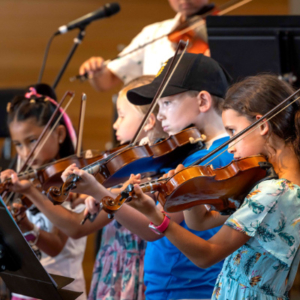Conserving history
![Black and white image of people on the verandah of with the words Wagonga Ho[tel] on the roof.](https://thetriangle.org.au/wp-content/uploads/2025/10/Wagonga-300x300.jpg) Since introducing Joan Graham’s history accounts – Wagonga: A journey through its pictures and personalities – in the last Triangle, I asked Narooma Library if they had a copy. Unfortunately, the library doesn’t, although the book may be available in the National Library. Perhaps someone local with a private copy may wish to donate it to the Narooma Library for their reference section. Books such as this are important, as they document a time in which very few of today’s people were alive.
Since introducing Joan Graham’s history accounts – Wagonga: A journey through its pictures and personalities – in the last Triangle, I asked Narooma Library if they had a copy. Unfortunately, the library doesn’t, although the book may be available in the National Library. Perhaps someone local with a private copy may wish to donate it to the Narooma Library for their reference section. Books such as this are important, as they document a time in which very few of today’s people were alive.
Joan’s book covers the period from the 1880s to the early 1940s. It is well researched, and this is what she stated in the Introduction – It is an attempt to keep alive in memory, the wonderful people who lived and worked in this region, and who are no longer in this world. Some are no longer in our memories. I also want to recognise the lives of my parents, who in a quiet unassuming way, contributed so much to this area. As I began researching, I realised that both my parents’ forebears, were among the original settlers of Wagonga, Punkalla and Narooma. Consequently, their lives and some family events weave in and out of the stories and the history. This may be of little interest to the reader. However, as the stories also embrace local history and descriptions of an earlier lifestyle, I have been encouraged by many to publish the material for public perusal. My initial intention was to put in order the material in my possession for our children’s and grandchildren’s information.
Joan’s account is based on research from her father’s material and his long association with the area as well as her mother’s diary. As much as possible she also did broader research to substantiate and give accuracy to her account. Perhaps her account is charming because she also offers anecdotes that really give a special life to this book. Divided into seventeen chapters, the reader is taken on a journey from white settlement of the area, place names, the history of gold, timber and Wagonga Inlet, local personalities, daily life and social get-togethers, education, the relationship with local Aboriginals, the 1920s and WWII.
Wagonga was an isolated area in its early days. Nowadays, it is hard to imagine the original settlement. Joan remembers a church, post office, blacksmith’s shop, school, receiving stores at the wharf, a CPS office (Court of Petty Sessions) and eight homes. There was also a hotel that burnt down in 1903 (where Pub Hill is today) and a hall. The hall was relocated at some stage and the CPS building was moved to Central Tilba. Glencoe, Joan’s childhood home is the only remaining original house, sensitively and lovingly renovated and extended by Peter and Jenny John and now owned by Tom Skulander.
There are many links to the Tilba area but one I particularly like is the story of Les Black who owned the General Store at Central Tilba. Every Friday he would bring almost an entire grocery store on his truck as well as bolts of material, crockery, cooking utensils, haberdashery, underwear and working clothes. He would also take orders and deliver the following week. He was generous with credit and supported many people over hard times. This remarkable service continued until the late 1930s.
Personalised accounts like this are rare nowadays. They are a reminder of the importance of written documentation in telling the stories of place and its people. Indeed, we are also very fortunate to have the books researched and written by Laurelle Pacey and Diana Watson’s Negatives of Glass that complement accounts such as Joan Graham’s. Joan’s book is a treasure and, hopefully, it may be available at the Narooma Library some day …
Stuart Absalom
Photo: Wagonga Hotel c1895, courtesy Negatives of Glass.
![Black and white image of people on the verandah of with the words Wagonga Ho[tel] on the roof.](https://thetriangle.org.au/wp-content/uploads/2025/10/Wagonga-400x321.jpg) /
/
